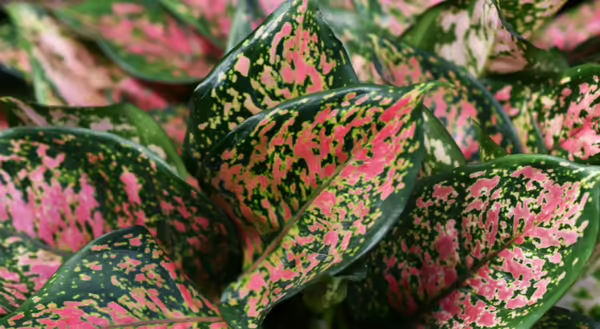
Growing plants indoors can add a soft green touch, create a focal piece, or incorporate nature inside, transforming any room. Houseplants vary greatly in color, texture, size, and shape—there is a plant perfect for any spot. Research has also shown plants to improve air quality, lower stress levels, and increase productivity when they are grown in indoor spaces and homes.
The most important thing to consider when growing houseplants is the placement in favorable conditions: light, temperature, and humidity. After bringing your plant home, you may notice the leaves turning yellow or dropping—do not be alarmed! It is just getting acclimated to the new growing environment. But if it looks poor longer than three weeks, find a new spot to place your plant in more favorable conditions.
Three of my favorite houseplants, based on interest, availability, and ease of care are ZZ plant, aglaonema, and peperomia.
ZZ plant (Zamioculcas zamiifolia) This architecturally beautiful plant might be the toughest houseplant there is! It is often found in greenery displays in office buildings or malls, reaching two feet tall and wide. The glossy, dark green foliage is often so perfect that it almost looks fake—even when neglected. ZZ plants grow best in low to bright indirect light but will also grow under fluorescent lighting. Water the plants when they are dry, but if you forget a week (or 3!) they are pretty forgiving. One drawback to this near-perfect plant is that all parts of the plant can cause skin and eye irritation (wear gloves and wash hands well!) or cause digestion issues if ingested. Apply a balanced houseplant fertilizer once a month (reduce it to once every six months for slower growth). The best method of propagation for ZZ plants is division, but leaf cuttings can also produce new plants, they just take a long time to root. A unique variety of ZZ plants is ‘Raven’, which emerges bright green, then transforms into striking dark foliage.
Chinese Evergreen (Aglaonema commutatum) These house plants offer a gorgeous foliage display, ranging from dark green and silver to hints of red. They are great for low light conditions, near north or east-facing windows. However, the lighter the color on the leaves, the more light it will need. They prefer slightly moist soil—do not let it dry out between watering. Fertilize aglaonema plants every four weeks with a balanced houseplant fertilizer. Reduce fertilization to every six weeks in the winter. Aglaonema is a slow-growing plant, only reaching around one foot tall, so it will not need to be repotted for several years. Propagate by stem cuttings, taking new shoots with a minimum of five leaves. Favorite varieties include ‘Emerald Bay’ for its foliage with dark green edges with a silver-gray center, and ‘Georgi’s Ruby,’ which has both dark and light green foliage plus deep pink variegation.
Peperomia (Peperomia sp.) With over 1,000 varieties varying in leaf shape, texture, color, and size, each peperomia has a unique look. They prefer low to medium light from an east or north window. They will also grow well under fluorescent lighting. Peperomia can be sensitive to overwatering, causing root rot, so make sure the soil slightly dries out between watering. Peperomia is great for small spaces, as it only gets six to 12 inches tall. Very few pests and diseases bother their thickly, fleshy leaves. Propagate through division or leaf cuttings. Fertilizer plants every two weeks during the growing season with half of the strength recommended on the label of a balanced houseplant fertilizer; reduce to once a month in the winter. A couple of favorite peperomias include Peperomia clusiifolia ‘Jelly’, with oval leaves outlined with pink and cream edges, Peperomia caperata ‘Red Ripple’, adorned with deeply textured, purple, heart-shaped leaves, and watermelon peperomia (Peperomia argyreia), which has dark green and silver patterned leaves.
PHOTO CREDIT: Chinese Evergreen; David Clode, Unsplash
ABOUT THE AUTHOR: Brittnay Haag is a Horticulture Educator with University of Illinois Extension, serving Livingston, McLean, and Woodford Counties. Her work focuses on youth horticulture education, specifically through school gardens and Jr. Master Gardener programs. Brittnay provides leadership for three county Master Gardener programs and is responsible for developing community programs and providing expertise in horticulture and environmental sciences.